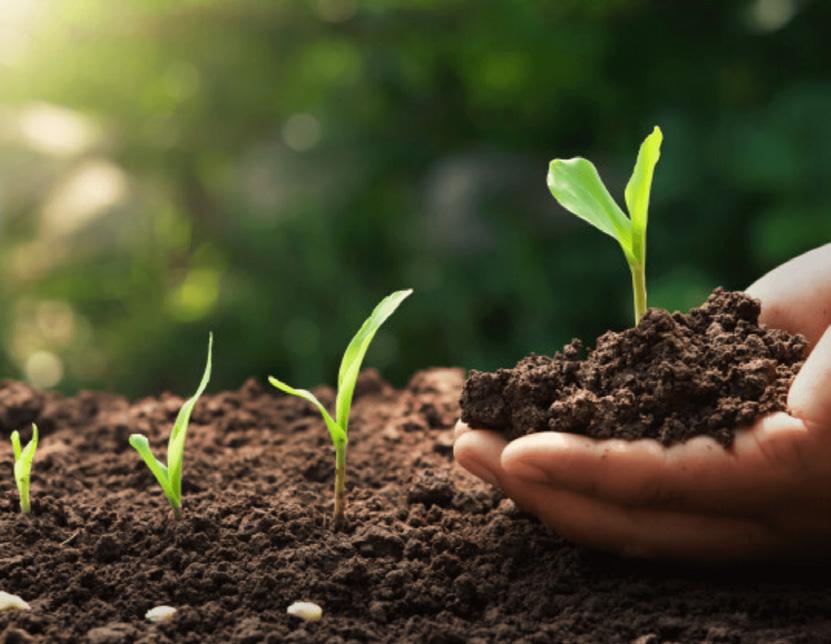
17 minute read
ส่งเสริมการปลูกพันธุ์เมล็ด สร้างความเปลี่ยนแปลงแก่ไร่อ้อย Planting The Seed of Change
ปั จจุบันนี้ การท�ำเกษตรกรรมแบบใช้เครื่องจักรกลมีประโยชน์อย่างมากในการเพาะปลูกใน เอเชีย เพราะเป็นการพลิกฟื้นที่ดินที่ไม่มีการท�ำการเกษตรใดๆให้เกิดประโยชน์สู่เจ้าของ ซึ่งเป็นหนึ่งในแรงขับเคลื่อนที่ส�ำคัญต่ออุตสาหกรรมน�้ำตาลในปัจจุบัน ให้เกิดการพัฒนาและ สร้างผลผลิตมหาศาลต่อเศรษฐกิจ อย่างไรก็ตาม การท�ำกิจกรรมทางการเกษตรต่างๆได้ส่ง ผลกระทบต่อสภาพแวดล้อมโลก จึงมีความจ�ำเป็นต้องบริหารจัดการอย่างถูกวิธี เพราะการ ได้ผลผลิตที่ลดลงจากพื้นดินที่เคยอุดมสมบูรณ์ เริ่มกลายเป็นประเด็นส�ำคัญและน่าสังเกต มากยิ่งขึ้น เมื่อการขาดแหล่งน�้ำรวมทั้งพืชผลมีจ�ำนวนน้อยลงเป็นตันๆเสมือนว่าเราก�ำลังอยู่ ใน “ฤดูกาลหีบอ้อย” ครั้งสุดท้ายหรือไม่ ซึ่งเป็นเรื่องที่น่าเสียดาย ถ้าสาเหตุหลักนั้นมาจาก การใช้เครื่องจักรกลการเกษตรแบบไม่เหมาะสมในการจัดการการเพาะปลูก
Advertisement
การใช้รถที่บรรทุกน�้ำหนักมากเกินไปบนผืนดินเป็นสาเหตุ ให้ดินมีลักษณะการอัดตัวเป็นชั้นแข็ง ท�ำให้อากาศและน�้ำไม่ สามารถซึมผ่านได้ ซึ่งต้นอ้อย เป็นพืชยืนต้นตระกูลเดียวกับ หญ้า จะช่วยต่อการตัดได้ดีเมื่อมีสารอาหารและความชื้นที่พอ เพียงส�ำหรับรากของพืชที่มีลักษณะสั้น ท�ำให้ต้นอ้อยจะยังคง เจริญงอกงามดีแม้จะถูกตัดออกไปแล้ว จึงเรียกส่วนที่เหลือนี้ ว่า “อ้อยตอ” ซึ่งเป็นสิ่งที่ชาวไร่อ้อยทั่วโลกได้เพาะปลูกอ้อย หมุนเวียน แต่ “อ้อยตอ” ที่ใช้การได้นั้นก�ำลังกลายเป็นอดีต เนื่องจากดินที่อัดตัวกันแน่นท�ำให้มีผลผลิตลดลงในแต่ละ ปี เพราะดินแบบนี้จะไม่มีความสามารถในการอุ้มต้นพืชให้ เจริญเติบโตได้หลังจากถูกรถแทรกเตอร์ เครื่องตัดอ้อย และ รถบรรทุกทับหน้าดินเป็นเวลานาน การฟื้นฟูดินให้กลับมามีคุณภาพอาจท�ำได้โดยการไถ พรวนดินให้ลึกขึ้น และใช้ปุ๋ยเร่งสารอาหารจ�ำนวนมากรวมทั้ง สารเติมแต่งที่มนุษย์ท�ำขึ้นเอง นั่นหมายความว่าพื้นที่ไร่เหล่า นี้จะยังไม่สามารถให้ผลผลิตได้และเสียผลประโยชน์ในการ ค้าขายไปชั่วระยะหนึ่ง แต่ก็ชัดเจนว่าการน�ำกระบวนการที่เป็น มิตรต่อสิ่งแวดล้อมมากขึ้นมาใช้ โดยก�ำหนดวิธีการเพาะปลูก ที่แตกต่างอย่างหลากหลาย ท�ำให้พืชมีความแข็งแรงและสร้าง ความอุดมสมบูรณ์แก่ดินด้วยการไถผิวหน้าดินที่อัดตัวแน่นให้ กระจายออกเป็นระยะๆอย่างสม�่ำเสมอ อีกหนึ่งวิธีการที่ได้รับค�ำแนะน�ำมาแล้วก็คือการหยอด เมล็ดลงในหลุมดินที่ใช้เครื่องปลูก ซึ่งจะซึ่งจะช่วยให้ต้นอ้อย สามารถแตกหน่อภายได้ชั้นดิน และอาจจะท�ำให้มีการพัฒนา ของรากต้นอ้อยอย่าง รวมทั้งช่วยแยกผิวหน้าดินที่แข็งออก เมื่อพืชเจริญเติบโตในเวลาเดียวกัน ท�ำให้ลดผลกระทบจาก ชั้นดินที่อัดตัวแน่น วิธีการเจาะผ่านชั้นดินเพียงอย่างเดียวจะ ช่วยเพิ่มการรับสัมผัสของเมล็ดต่อความชื้นในดินชั้นล่างทันที การก่อตัวของรากที่อยู่ลึกลงไปในสภาพแวดล้อมที่ควบคุม ของหลุมปลูกที่เตรียมไว้หมายความว่า การรับสารกระตุ้นรากจะ “เพิ่มขึ้น” สูงสุดเนื่องจากความลึกของพืชนั้นเพียงพอ จึงได้รับผลกระทบน้อยลงจากวัชพืชและศัตรูพืชอื่นๆ อีกด้วย ผู้เชี่ยวชาญด้านการเกษตรเชื่อว่าการปลูกด้วยหลุมเป็นกลไกน�ำไปสู่การปรับปรุงที่ส�ำคัญในด้านการผลิตและสภาพ ดินที่ดีขึ้นโดยทั่วไปในหลายกรณี อย่างไรก็ตาม กระบวนการขุดหลุมพืชที่เตรียมไว้อย่างมีประสิทธิภาพ (ที่ระดับความลึก ที่เหมาะสม) การปลูกเมล็ดอ้อยที่แท้จริง การเพิ่มปริมาณการเจริญเติบโต หรือการใช้ปุ๋ยที่ถูกต้องจะมีความซับซ้อนและ ต้องใช้แรงงานจ�ำนวนมากในการด�ำเนินการ การด�ำเนินการข้างต้นยังมีความซับซ้อนในขณะที่ผู้เชี่ยวชาญส่วนใหญ่ก�ำลังหาวิธีฝ่าฟัน แต่คุณสามารถ ลี้ธีระนานนท์ วิศวกรผู้มีชื่อเสียงคนหนึ่งของประเทศไทยมีแนวคิดอื่นที่ต่างออกไป เขากล่าวว่า “มันเป็นเรื่องของระบบอัตโนมัติที่เหมาะ สม เพราะเรารู้ว่าประโยชน์คืออะไร เรารู้ว่าเราต้องท�ำอะไร และจะต้องท�ำอย่างไรเพื่อผลลัพธ์ที่ดีที่สุด นี่เป็นแค่ปัญหาทาง วิศวกรรมอีกอย่างหนึ่ง และ “พวกเราต้องแก้ไขปัญหาให้ได้” คุณสามารถกล่าวเพิ่มเติมว่า เครื่องจักรกลการเกษตรที่สามารถด�ำเนินกระบวนการดังกล่าวอย่างมีประสิทธิภาพ จะ ต้องด�ำเนินการตามเงื่อนไข ดังต่อไปนี้: ต้องสามารถเจาะผ่านดินเหนียวได้อย่างแน่นอนและตามความลึกที่ต้องการ ต้องมีถังบรรจุที่สามารถรับน�้ำหนักอ้อยได้จ�ำนวนมาก ต้องป้อนเมล็ดพืชที่มีความยาวแตกต่างกันลงแต่ละหลุมที่เตรียมไว้ได้ ต้องมีความสามารถในการให้สารบ�ำรุงแก่ต้นอ้อยที่มีการเจริญเติบโตที่เหมาะสมหรือมีการเตรียมยาฆ่าแมลงก่อน ปลูกได้ ต้องเตรียมถมดินเพื่อคลุมอ้อยเมื่อปลูกได้แล้ว ต้องมีความประหยัดอย่างมาก ต้องมีกระบวนการปลูกที่ดีและดูแลบ�ำรุงง่าย ซึ่งนี่คือเกณฑ์ที่คุณสามารถก�ำหนดไว้ส�ำหรับตลาดอ้อย โดยจัดให้มีผลิตภัณฑ์ซึ่งจะเพิ่มผลก�ำไรและอายุการใช้งาน ที่ยาวนานของการผลิตอ้อย แม้ว่าวิธีการนี้จะช่วยแก้ไขเรื่องปัญหาชั้นดินที่อัดตัวแน่นได้ แต่ยังคงต้องน�ำแนวคิดด้านการ พัฒนาพืชผ่านกระบวนการปลูกที่เหมาะสมมาประยุกต์ใช้อยู่ คุณสามารถอธิบายกล่าวว่า “ในทางทฤษฎี การปลูกพืชด้วยเครื่องจักรที่มีความแม่นย�ำอาจเป็นค�ำตอบดินที่อัดตัว เป็นชั้นแข็งและไม่มีความอุดมสมบูรณ์ แต่ค�ำตอบที่แท้จริงอยู่ที่การลดความเสียหายของดินในระยะยาวตั้งแต่แรก เครื่อง เตรียมดินและเก็บเกี่ยวด้วยแรงดันดินต�่ำจะท�ำงานคล้ายกับเครื่องจักรรุ่นเก่าที่สร้างความเสียหายให้ดิน ภาคอุตสาหกรรม
ต้องใช้กระบวนการนี้อย่างมีกลยุทธ์เพื่อให้ระบบการปลูกพืชด้วย reproduction is factored into the economical calculation of virtually every cane farmer worldwide. เครื่องจักรกลายเป็นปัญหาระยะสั้น และเพื่อให้แน่ใจว่าระบบ However, reliable “ratoon” is becoming a thing of the past as compacted soil produces less usable นี้จะก่อให้เกิดแรงอัดดินที่น้อยลงในอนาคต คุณสามารถสรุป product year on year. The soil simply does not have the capacity to support viable plants once it has ว่า “การใช้แรงที่มีน�้ำหนักน้อยบนดิน ได้ผลดีกว่ากระบวนการ become severely compacted over a period of time by tractor, harvester and carry truck traffic. ซ่อมแซมดินที่ผมได้ปรับใช้เสียอีก” Rehabilitation of inert fields can be effected by deep ploughing and prodigious application แน่นอนว่าทฤษฎีนี้ไม่ใช่สิ่งแปลกใหม่ เราตระหนักว่า of growth enhancers and humus based additives but this means the fields are temporarily out การปลูกพืชคือหยอดเมล็ดลงในชั้นดิน แต่อย่างไรก็ตาม อาจจะ of production and of course has a marked economical penalty. It is becoming more evident that พูดได้ว่า หากเครื่องจักรกลการเกษตรสามารถพัฒนาได้ตาม a more environmentally friendly approach is to utilise a different planting regime to both ensure เกณฑ์ข้างต้น ก็จะเป็นการน�ำรายได้มาสู่เกษตรกร และมีส่วนช่วย a more healthy plant from the outset and encourage the enrichment of the soil through gradual ในการเพิ่มสภาพแวดล้อมในการปลูกอ้อย ซึ่งเครื่องจักรที่มี breaking up of the compacted surface. การใช้งานมากมายและอย่างแพร่หลายในภาคอุตสาหกรรมใน One suggested approach is to plant seeds in a machine prepared hole. This creates a micro เอเชีย ท�ำให้เราอาจจะเริ่มเห็นผลผลิตในไร่อ้อยหายไปและสูญ environment under the soil crust in which the cane can begin to thrive. This should then encourage เสียผลก�ำไรเนื่องจากความเสียหายของดิน ดังนั้น การพัฒนา deeper root development and at the same time start to break up the hard surface of the soil as ดังกล่าวนี้จะสามารถผลักดันให้เกิดขึ้นได้ในเอเชียนี้เท่านั้น the plant grows, obviating the strangling effects of the soil compaction. The process of drilling เพราะเอเชียเป็นทวีปที่ได้รับผลกระทบทางลบต่อสิ่งแวดล้อม alone breaks through the soil crust and immediately enhances the seed’s exposure to the moisture จากการใช้อุปกรณ์เครื่องใช้ต่างๆจากเกษตรกร และหวังว่าวิธี held in the sub soil. The deeper root formation within the controlled environment of the prepared การที่ได้รับค�ำแนะน�ำนี้จะท�ำให้เอเชียกลายเป็นที่หนึ่ง! growing hole means that “take up” from any root stimulant additives is maximised and because the plant is already deep it is less affected by weeds, other competitive plants and pests. Agricultural engineers believe that adopting mechanised “hole based” planting could eventually lead to significant improvements M echanised farming has bought many benefits to Asian agriculture, allowing previously unworkable land to come into useful production in productivity and a generally improved soil condition in most cases. However, the process of efficiently drilling prepared plant holes (at for its owners. This has allowed the sugar industry as we know it today the appropriate depth), planting the actual to develop and provide a significant contribution to the economy. However, cane seed and providing correct doses of we are finding now that like many other of man’s interventions on the growth enhancer or fertiliser is complex and work intensive requiring several operations World’s environment it needs to be managed. Diminishing return from to take place. previously productive land has started to become an issue and this To automate it is a complicated process is most noticeable when water becomes scarce and the general crop which most engineers are fighting shy of, however, Samart Leethirananon, one of Thailand’s tonnage is reduced as in our last “crushing season”. Unfortunately, one celebrated development engineers has other major influencing factor is the use of inappropriate mechanisation. ideas, “It’s simply a matter of appropriately applied automation” he says. “We know what Vehicles that exert excessive point loadings on the land the benefits are, we know what we must do and how we must do it for optimum results, cause soil compaction, eventually creating an impermeable it’s just another engineering issue. We’ll solve it”. crust on the surface of the fields. As it is a perennial grass, Leethirananon comments further that to be effective a machine carrying out this sugarcane, (Saccharum officinarum), like other grasses will process must fulfil the following criteria: respond well to cutting. So with a good supply of nutrient It must be able to drill through tough soils, reliably and to a chosen depth. and moisture to its relatively shallow root system, it will It must have a hopper capable of holding a substantial load of seed cane continue to grow even after severe pruning. We enjoy It must feed individual lengths of seed to each of the prepared holes this phenomenon as our “ratoon” cane and this facet of Optionally it must be able to dose the cane with appropriate growth or insecticide preparations prior to planting. It must provide infill to cover the cane once it has planted It must be economically powered It must be easily operated and maintained These are the criteria laid down by Leethirananon to provide the market with a product which will enhance profit and longevity of any cane producing operation. Of course although this process helps where compaction is an issue it can be applied on prepared fields, the concept of improved plant development through optimised planting processes still applies. Leethiranon explains further “Conceptually, precision machine planting may provide answers to compacted non-productive land, but the real answer lies in reducing long term soil damage in the first place. Soil preparation and harvesting machines with low ground pressure do the same job as those older designed machines that damage. The industry must approach this strategically so that the machine planting system becomes a short term issue whilst we work to ensure future mechanised harvesting systems are low ground pressure to minimise environmental impact”. Leethirananon concludes “A light footprint on our soil in the first place works better than any soil repair processes I can devise”. It is clear that this concept in itself is not a new idea. Let’s face it planting is purely putting a seed in the ground. But, it has to be said that if a machine can be developed, which fulfils the above criteria economically and proves to contribute to towards enhancing the cane growing environment it would find many applications in the industry. And, with wider use in Asia we may be able to begin to reverse the trend that we are starting to see in lost cane and lost profit through soil damage. A development of this type can only be driven by Asia. Asia is where the negative environmental effect of equipment design by agriculturalists who are remote from our markets is being felt. Hopefully with this revised approach Asia will win through!.
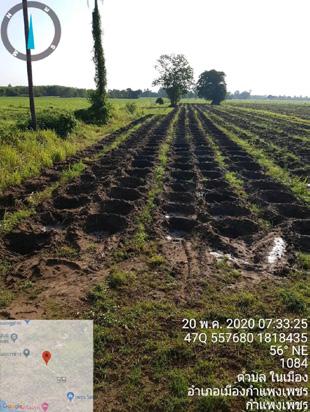
Author by Philip Pope, Engineering Consultant. For more information email info@popemecheng.co.uk Tel +66619728355
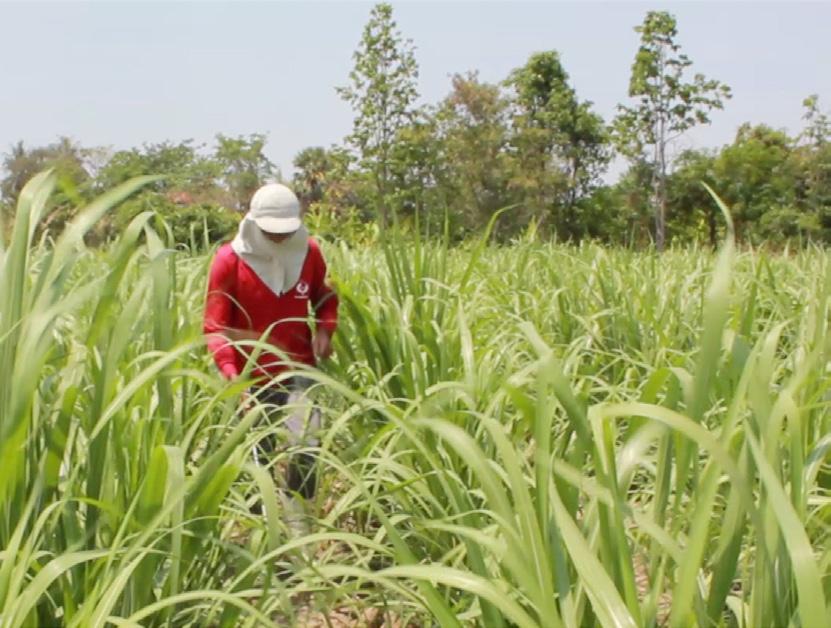
Sugar Asia ร่วมกับ บริษัท ไฟร์เวิร์คส มีเดีย (ไทยแลนด์) จํากัด จับมือสาม วิทยากรผู้เชี่ยวชาญและมีชื่อเสียงในวงการอุตสาหกรรมอ้อยและน้ำตาลไทย จัดงานสัมมนาออนไลน์ฟรี How the Pandemic is Affecting the Thai
น�ำโดย คุณรังสิต เฮียงราช ผู้อ�ำนวยการบริหารบริษัท ไทย ชูการ์ มิลเลอร์ จ�ำกัด คุณอิสสระ ถวิลเติมทรัพย์ คณะ กรรมการบริหารของบริษัท น�้ำตาลครบุรี จ�ำกัด (มหาชน) และได้รับเกียรติจาก ดร.พิพัฒน์ วีระถาวร กรรมการสมาคม นักวิชาการอ้อยและน�้ำตาลแห่งประเทศไทย เป็นผู้ด�ำเนิน รายการสัมมนา การสัมมนาออนไลน์ครั้งนี้ได้รับการตอบ รับจากผู้เข้าเข้าฟังอย่างมากทั้งในไทยและต่างประเทศที่ ต้องอัพเดตสถานการณ์ น�ำมาปรับใช้เพื่อลดความเสี่ยงใน การบริหารธุรกิจ ปัจจุบันประเทศไทยมีโรงงานน�้ำตาล 57 แห่ง ตั้ง อยู่ในภาคเหนือ 10 โรงงาน ภาคตะวันออกเฉียงเหนือ 22 โรงงาน ภาคกลาง 20 โรงงาน ภาคตะวันออก 5 โรงงาน มี ก�ำลังการผลิตรวมทั้งหมด 1.2 ล้านตัน (Mln TCD) มีพื้นที่ เพาะปลูกอ้อยรวมทั้งหมด 1.7 ล้านเฮคตาร์ แต่โดยเฉลี่ย แล้วเกษตรกรชาวไร่อ้อยมีพื้นที่เพาะปลูกน้อยกว่า 5 เฮคตาร์ และมากกว่า 80% ยังขาดระบบชลประทานในพื้นที่เพาะ ปลูก ในส่วนของโรงงานจะหน้าที่ในการสนับสนุนการเงิน อุปกรณ์การเกษตร เครื่องจักรเก็บอ้อยต่างๆ รวมถึงปัจจัย การผลิตแก่ชาวไร่อ้อย ส่วนผลผลิตประมาน 80% จะน�ำ ส่งออกไปยังตลาดต่างประเทศ คุณรังสิต เฮียงราช ผู้อ�ำนวยการบริหารของบริษัท ไทย ชูการ์ มิลเลอร์ จ�ำกัด ได้กล่าวถึงสถานการณ์โดย รวมของอุตสาหกรรมอ้อยและน�้ำตาลในปัจจุบันว่า “เราได้ เผชิญภัยแล้งในช่วงระหว่างสองปีที่ผ่านมา รวมถึงมี ปัจจัยเกี่ยวข้องอย่างแม่น�้ำกลองที่ได้ลดระดับต�่ำลงใน รอบ 60 ปี ผมคิดว่าภัยแล้งไม่ได้เกิดขึ้นแค่เฉพาะใน ประเทศไทยนั้น แต่เกิดขึ้นไปทั่วภูมิภาค สิ่งนี้คือเหตุผล ที่ว่าท�ำไมผลผลิตอ้อยในปี 2019/2020 ลดลงไปมากกว่า 40% เมื่อเทียบกับปีก่อน ปัจจัยแรกคือภัยแล้ง ปัจจัย ถัดมาคือการตกของราคาน�้ำตาลในตลาดโลกที่ท�ำให้ส่ง ผลกระทบต่อราคาอ้อยในช่วงสองปีที่ผ่านมาด้วย สิ่งนี้ อาจมีผลให้เกษตรกรบางคนหันไปปลูกพืชชนิดอื่นแทน โดยเฉพาะมันส�ำปะหลัง” จากการคาดการณ์ของบริษัท ไทย ชูการ์ มิลเลอร์ ผลผลิตอ้อยในฤดูปี 2020/2021 มีการคาดการณ์ 65-70 ล้านตันอ้อย และจะมีการผลิตน�้ำตาลประมาน 7-7.5 ล้าน ท�ำให้ประเทศไทยจะมีการส่งออกน้อยในปีนี้ ปัจจัยอีก ประการหนึ่งก็คือ มาตรการของรัฐบาลในประเด็นของ นโยบายการเก็บเกี่ยวสีเขียว (Green Harvest Policy) นั่นคือเกษตรกรต้องห้ามมีอ้อยไฟไหม้เกิน 20% ใน การส่งไปยังโรงงานหีบอ้อย และถ้าหากมีการตรวจพบ อ้อยไฟไหม้ เกษตรกรจะต้องเสียค่าปรับให้กับโรงงาน เป็นเงิน 30 บาท ต่อตันอ้อยไฟไหม้ และโรงงานก็จะ ต้องถูกปรับเป็นเงิน 20 บาทต่อตันอ้อยไฟไหม้เช่นกัน เนื่องจากมีการอ้างอิงตัวเลขตามเป้าหมายการลดอ้อยไฟ ไหม้ 20% โดยมีข้อมูลจากรัฐบาลว่า การเกิดมลภาวะ
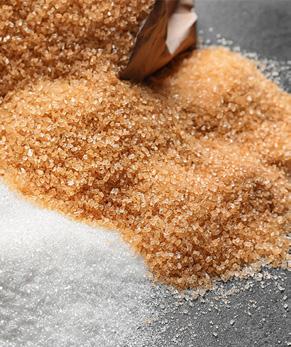

COVID-19 กับ อุตสาหกรรมน้ำตาลไทย
ไวรัสโคโรนาสายพันธุ์ใหม่มีการระบาดไปทุกพื้นที่ทั่วโลก รวมถึงประเทศไทย แต่โดยรวมสถานการณ์ในประเทศไทย ก�ำลังดีขึ้น บางธุรกิจเริ่มกลับมาปฎิบัติงานได้ตามปกติ แต่ ไม่ว่าอย่างไรก็ตาม ตั้งแต่เริ่มมีการระบาดไวรัสโคโรนาสาย มีการบริโภคน้อยกว่า 2.30 ล้านตัน เมื่อเทียบกับปี 2019 เสริมอย่างการปิดร้านอาหาร ร้านค้า หรือบางพื้นที่การค้า การไร้นักท่องเที่ยวในช่วงที่มีการเกิดการระบาด รวมถึง คุณอิสสระ ถวิลเติมทรัพย์ คณะกรรมการบริหาร นี้มองว่าสถานการณ์โควิดในไทยมีความปลอดภัยในระดับ พันธุ์ใหม่ ส่งผลให้การบริโภคน�้ำตาลในประเทศลดลงอย่างมี นัยยะส�ำคัญ คุณรังสิตเสริมว่า มีการคาดการณ์การบริโภค น�้ำตาลอยู่ประมานที่ 2.5 ล้านตัน และดูเหมือนว่าอาจจะ หนึ่ง ถึงแม้ว่าการบริโภคในประเทศจะรายงานว่าลดลงอย่าง น้อย 10% แต่ในส่วนของโรงงานน�้ำตาลทุกที่ในประเทศไทย ก็มีความพยายามที่จะท�ำให้มีการปลูกอ้อยให้มากที่สุดเท่าที่ จะท�ำได้ เพื่อที่จะลดผลกระทบผลผลิตน�้ำตาลที่มีแนวโน้ม จะลดลงในปีหน้า “ยกตัวอย่างเช่นโรงงานน�้ำตาลของ KBS เองที่มีการ เตรียมพร้อมในการรับมือการระบาดของโรคเป็นอย่างดี เรา มีการประชุมวางแผนล่วงหน้าเพื่อเตรียมการเรื่องขั้นตอนการ ผลิต ส่วนในกรณีล็อคดาวน์ ก็คงต้องมีการรับมือในเรื่องการ สั่งซื้อใดๆที่มาจากต่างประเทศ แน่นอนในประเทศด้วย เรา จะมีการเปลี่ยนปฎิบัติการในเชิงออนไลน์มากขึ้นด้วยกรณีโรค ระบาด และถ้าหากโรงงานน�้ำตาลไม่สามารถเปิดได้ ก็คงจะ กลายเป็นปัญหาใหญ่” คุณอิสสระ กล่าว ประเด็นเรื่องการปรับเปลี่ยนโครงสร้างในอุตสาหกรรม เป็นอย่างไร? คุณรังสิตกล่าวว่า “อันที่จริงแล้ว อุตสาหกรรม ตั้งแต่วันที่ 15 มกราคม 2018 เรามีได้มีการเปลี่ยนระบบ โควต้า โดยเฉพาะโควต้า Local Sale รวมถึงการส่งออก ต้องพิจารณาหลักๆคือ อุตสาหกรรมจะเอาตัวรอดต่อความ

น�้ำตาลได้เยอะกว่านี้ ท�ำอย่างไรถึงจะผลิตได้เยอะมากขึ้น เพื่อการส่งออกด้วยราคาที่สูง สิ่งเหล่านี้เป็นเรื่องที่ซับซ้อน เพราะทุกๆโรงงานก�ำลังเผชิญความยากล�ำบากในเรื่องของ การขายหรือแม้แต่ในเรื่องของการเงิน” อุตสาหกรรมอ้อยและน�้ำตาลคืออุตสาหกรรมหนึ่งที่ สร้างความเข้มแข็งให้กับประเทศ “ก่อนหน้านี้ผมได้มีโอกาส พูดคุยกับเจ้าของโรงงานน�้ำตาลท่านหนึ่ง เราได้ปรึกษาเรื่อง การขาย การพัฒนาธุรกิจต่อไปยังไง จะเพิ่มผลผลิตและ ปรับปรุงประสิทธิภาพยังไง รวมไปถึงการลดต้นทุนการ ผลิต และการสนับสนุนให้ชาวไร่อ้อยปลูกอ้อยมากขึ้นเพื่อ ส่งออก และสิ่งเหล่านี้ก็คือประเด็นส�ำคัญที่ต้องหาวิธีหรือ แนวทางแก้ไข” ในส่วนของอนาคตของอุตสาหกรรมน�้ำตาลไทย คุณ รังสิตมองว่า “การช่วยเหลือของรัฐบาลในอุตสาหกรรม น�้ำตาล มีความส�ำคัญมาก เพราะตอนนี้ทุกๆคนก�ำลังเผชิญ กับความยากล�ำบากของการระบาดไวรัส โดยการช่วยเหลือ เกษตรกรชาวไร่อ้อย เราพร้อมเสมอที่จะร่วมมือกับรัฐบาลใน การสนับสนุนการเพาะปลูกอ้อย เพราะการใช้ประโยชน์จาก อ้อยที่ไม่ใช่แค่เรื่องน�้ำตาล แต่เป็นเรื่องของพลังงานด้วย เช่น ไบโอเคมิคอล ที่ยังสามารถต่อยอดไปอีกในอนาคต นอกจาก นี้รัฐบาลยังสามารถสนับสนุนเรื่องการเงินแก่ชาวไร่อ้อย ไป พร้อมๆการสนับสนุนภาคเกษตรกรรมในประเทศ ซึ่งใน ส่วนของเกษตรกร เราควรต้องปรับปรุงเรื่องโครงสร้างพื้น ฐานโดยเฉพาะในเรื่องระบบชลประทาน ไม่ใช่แค่ส�ำหรับ อ้อยเท่านั้น แต่ยังมีประโยชน์ส�ำหรับพืชชนิดอื่นด้วย สิ่งนี้ คือการลงทุนระยะยาวซึ่งจะเป็นการช่วยพัฒนาผลผลิตภาค เกษตรกรรมที่มีสิ่งที่ส�ำคัญมากๆ เพราะเราต้องมีการบริโภค ทุกวัน ยิ่งไปกว่านั้นคือ ประเทศไทยสถานที่ที่ดีสุดส�ำหรับ ธุรกิจเกี่ยวกับการเกษตร” ทั้งนี้การรับมือกับผลกระทบการระบาดโควิด-19 ต่อ อุตสาหกรรมอ้อยและน�้ำตาลทรายไทย ทางฝ่ายผู้ประกอบ การโรงงานน�้ำตาลก็มีการเตรียมความพร้อมเพื่อบรรเทา ความเสี่ยงในเรื่องของการเพิ่มประสิทธิภาพการเพาะปลูก อ้อยส่งเข้าโรงงาน เพื่อผลิตน�้ำตาลให้ได้มากที่สุด ตลอด
ที่มีการบริโภคน�้ำตาลประมาน 2.45 ล้านตัน โดยมีปัจจัย แรงงานข้ามชาติที่ท�ำงานในไร่อ้อยกลับประเทศบ้านเกิด ของบริษัท น�้ำตาลครบุรี จ�ำกัด (มหาชน) กล่าวว่า ตอน น�้ำตาลไทยเนื่องจากการระบาดของ COVID-19 จะมีทิศทาง น�้ำตาลไทยมีการปรับเปลี่ยนโครงสร้างตั้งแต่เมื่อสองปีก่อน ด้วย ส่วนในเรื่องผลกระทบต่อโรคระบาด ประเด็นส�ำคัญที่ จนการส่งเสริมการขายผลิตภัณฑ์เพื่อส่งออก โดยทางบริษัท
ยากล�ำบากนี้ยังไงในแง่ของอุปทาน ท�ำอย่างไรถึงจะขาย ไทยชูการ์ มิลเลอร์ จ�ำกัด เปิดเผยว่า อุตสาหกรรมอ้อยและ น�้ำตาลไทยควรเตรียมพร้อมในเรื่องประสิทธิภาพการหีบสกัด น�้ำตาลต่อตันอ้อยให้สูงที่สุด ควบคู่กับรณรงค์ให้ชาวไร่ตัด อ้อยสดเพื่อลดปัญหาอ้อยไฟไหม้ และขณะเดียวกันก็ต้อง เร่งสร้างมูลค่าเพิ่ม โดยน�ำผลพลอยได้จากกระบวนการผลิต น�้ำตาลมาต่อยอดสู่ผลิตภัณฑ์ต่างๆ เป็นการสอดรับนโยบาย เศรษฐกิจชีวภาพ (Bio Economy) ของภาครัฐ โดยสิ่งนี้ ก็ จะเป็นอีกหนึ่งทางรอดของอุตสาหกรรมฯ ด้วยเช่นกัน
Sugar Asia, with cooperation of Fireworks Media (Thailand) Co. Ltd., along with three famous speakers specialized on Thailand’s cane and sugar industries, has lately organized a free seminar entitled, “How the Pandemic is Affecting the Thai Sugar Industry and How the Industry is Mitigating Risks? The speakers included Mr. Rangsit Hiengrat, the executive director of Thai Sugar Millers Corp. Ltd., Mr. Issara Thawiltermsap, a member of the executive board of Khonburi Sugar Public Co. Ltd., and Dr. Pipat Weerathaworn, a member of the Committee of Thailand Society of Sugarcane Technologists (TSSCT) was the moderator. The event was highly recognized by both Thai and foreign participants who would like an updated information on the concerned issue to adapt it for business risk management.
In Thailand, there are currently 57 sugar mills, 10 of which are located in the north, 22 in the northeast, 20 in the central and 5 in the east, with a total of 1.2 Mln TCD. The country has 1.7 million hectares of cane plantation areas, but, averagely, Thai farm owners have as few as 5 hectares to grow sugarcane while over 80% of them still lack irrigation in their plantation. In terms of the sugar mill, major responsibilities lie in financial support, agricultural equipment, cane harvesters as production factors for farm owners. Around 80% of the products will be exported to foreign markets. Mr. Rangsit Hiengrat, the executive director of Thai Sugar Millers Corp. Ltd., talked about an overall picture of the present cane and sugar industries, highliting that, for the past couple of years, Thailand had faced drought as the water level in Mae Klong River subsided to the lowest for the past 60 years. He thought that drought took place in both Thailand and all over the region, thus low cane production in 2019/2020 to over 40% in comparison with the previous year. Besides drought, the drop of the world sugar price affected the cane price during the last two years, as well. This might make some

farmers turn to other crops like cassava. According to the Thai Sugar Miller Co. Ltd.’s expectation, cane production in 2020/2021 may probably reach to 65-70 million tons and sugar production to around 7-7.5 million tons, making Thailand export less this year. Moreover, Thai government promoted the Green Harvest Policy. That is, local agriculturalists must not have over 20% of burned cane for extraction. Otherwise, they need to pay a fine of 30 Baht per a ton of burned sugar to the mill, which, in turn, must pay a fine of 20 Baht, according to numerical refences to target reduction of burned cane to as low as 20% Information of the Thai government stated that, due to air pollution in the past two years, especially in Bangkok and the north, caused by agricultural burning of wheat, cane, corn farms and crop leftovers, the problem was a major issue every sector had to solve immediately.
Covid-19 and Thailand’s Sugar Industry
The new Corona Virus is spreading in Thailand and other parts of the world; however, the overall situation in the country is getting better. Some business is back to normal. Since the beginning of the viral outbreak, sugar consumption dropped significantly. Mr. Rangsit added that sugar consumption had been actually expected to around 2.5 million tons, but it seemed to be as low as 2.30 million tons in comparison with 2019 when 2.45 million tons of sugar were consumed. The reason was principally closure of restaurants or some commercial areas in the country and lack of tourists during the pandemic, not to mention migrant workers in cane farms who went back home. Mr. Issara Thawiltermsap, a member of the executive board of Khonburi Sugar Public Co. Ltd., explained that the situation in Thailand was safe to some extent even though local consumption was as low as 10%. All sugar mills in Thailand are however trying to encourage cane plantation as much as possible to reduce the impact of decrease amount of sugar products in the following year. “Take for example sugar mills under KBS’ supervision which are well-prepared for the outbreak as we had a meeting to plan in advance regarding production procedures. In terms of the lockdown, any overseas and local purchases were carefully handled. We’ll change to an on-line operation platform in case of the pandemic, and, if any sugar mills are unable to function, there will be a big problem,” said Mr. Issara. Regarding the perspective of restructuring Thailand’s sugar industries due to the spread of Covid-19, Mr. Rangsit explained that, in fact, local sugar industries had been restructured since the last two years, particularly since 15 January 2018, when changes of local sale quotas and export took place. In terms of the impact on the pandemic, the important issue for consideration is how the industries survive the hardship regarding the supply, how to sell more sugar, and how to produce it a lot more for an export at high prices. These are complicated because every sugar mill is facing difficult sale or even financial affairs.
As cane and sugar are an industry that strengthens Thailand, “previously, I talked with an owner of a sugar mill and discuss with him about sales and business development as well as how to increase production, effectiveness improvement, production cost reduction and encouraging cane farm owners to grow more for export. These are important for solutions,” said Mr. Rangsit.
In terms of Thailand’s sugar industry’s future, Mr. Rangsit viewed that governmental support to the industry was very vital because we were at present facing the viral outbreak. The company are always ready to cooperate with the government to help cane farm owners to plant the crop since cane is useful for sugar production as well as energy like biochemicals, which can go further in the future. Besides, the government can provide some financial support to the farmers along with assistance to local agricultural sectors. Regarding the farmers, we have to improve infrastructure, especially irrigation, for both cane and other crops. This is a long-term investment which help develop agricultural sectors a lot since our consumption is daily. Furthermore, Thailand is ideal for agricultural business.
Concerning how to tackle the Covid-19 impact on Thailand’s cane and sugar industries, sugar mill owners have already prepared for risk management in terms of effectiveness increasing of growing cane for sugar mill production as well as promotion of export sales. The Thai Sugar Miller Co. Ltd. Revealed that Thailand’s cane and sugar industries should prepare for effective extraction per a ton of cane as much as possible along with encouraging fresh cane cutting to solve burned cane problems. At the same time, values should be added by using results from sugar production to various products, thus corresponding to the bio-economic policy issued by the government. All of these are factors that help the industries survive, as well.

ระบบดักฝุ่นไฟฟ้าสถิต (ESP) ตัวช่วย สร้างประสิทธิภาพอากาศสะอาดใน โรงงานน� ้ ำตาล Pursue Clean Air in Sugar Plant with Electrostatic Precipitator (ESP) Overhaul
Photo 1. Corroded Gas Distribution Screens
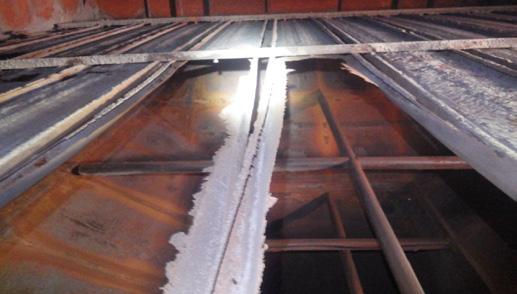
ในปัจจุบัน ระบบดักฝุ่นไฟฟ้าสถิต (ESP) ได้ถูกใช้ในอุตสาหกรรมโรงน�้ำตาลและ โรงไฟฟ้าชีวมวลเพื่อควบคุมค่าฝุ่นละอองจากปล่อง เครื่อง ESP ได้ถูกพิจารณาว่ามี ประสิทธิภาพมากกว่า มัลติไซโคลน (Multi Cyclone) ระบบบ�ำบัดอากาศเสียแบบเปียก (Wet Scrubber) หรือระบบควบคุมค่าฝุ่นแบบอื่นๆ ในขณะที่เครื่องดักฝุ่นแบบถุงกรอง (Baghouses) ไม่เป็นที่นิยมเนื่องจากความเสี่ยงต่อการเกิดเพลิงไหม้ และมีค่าใช้จ่าย ในการซ่อมบ�ำรุงสูง
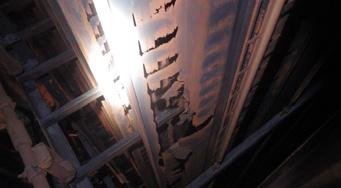

กรณีศึกษาของโรงน้ำตาลที่ประเทศไทย
โรงน�้ำตาลแห่งหนึ่งในภาคตะวันออก เฉียงเหนือของประเทศไทย ประสบปัญหา อย่างหนักเกี่ยวกับการกัดกร่อนของส่วนต่างๆ ภายในเครื่อง ESP โดยเฉพาะอย่างยิ่ง แผ่น อิเล็กโตรท (CE) และลวดอิเล็กโตรทแบบ หนาม (RDE) ทั้งหมด 3 ห้อง แผ่นและลวด อิเล็กโตรทเป็นส่วนเครื่องกลที่เกี่ยวข้องกับการ ดักจับและจัดเก็บฝุ่น แผ่นและลวดอิเล็กโตรท จะถูกท�ำความสะอาดโดยระบบค้อนเคาะฝุ่น และฝุ่นที่ได้จะถูกรวบรวมผ่านถังเก็บฝุ่น และ จะส่งต่อไปยังไซโล หรือพื้นที่จัดเก็บ จากการตรวจสอบเครื่อง ESP ของโรงงาน นี้ สาเหตุของการดักฝุ่นที่ไม่มีประสิทธิภาพ รวมไปถึงการกัดกร่อนของแผ่นอิเล็กโตรท คือการที่มีอากาศรั่วไหลจากประตูทางเข้า และบนห้องลูกถ้วย รวมถึงการโก่งงอของ ลวดอิเล็กโตรท บางห้องเกิดการลัดวงจรและใช้งานไม่ได้ เนื่องจากปัญหาของแผ่นและลวดอิเล็กโตรทที่ หลุดออกมาหรือโก่งงอมากจนใกล้สัมผัสกัน ปัญหาเหล่านี้ท�ำให้เครื่อง ESP ลดประสิทธิภาพ การดักจับฝุ่นลง และก่อให้เกิดปัญหามลพิษทางอากาศ ยิ่งไปกว่านั้น ปัญหาการรั่วไหลของเครื่องมัลติไซโคลน ท�ำให้อุณหภูมิลมร้อนขา เข้าลดลงต�่ำกว่า 100 องศาเซลเซียส ซึ่งก่อให้เกิดความชื้นภายในตัวเครื่อง ESP อย่าง ง่ายดาย สภาพของอุปกรณ์ต่างๆ ภายในเครื่อง ESP ได้รับความเสียหายอย่างมาก ดังแสดง ในรูปที่ 1 และ 2 ปัญหาต่างๆ ที่พบหลังจากการตรวจสอบตัวเครื่องได้ถูกรวบรวมและด�ำเนินการแก้ไข ภายใต้การท�ำงานของโปรเจคนี้ มีการเปลี่ยนแผ่นอิเล็กโตรทและลวดอิเล็กโตรทแบบหนาม ทั้ง 3 ห้อง โดยที่วัสดุของแผ่นอิเล็กโตรทห้องที่ 1 และ 2 เปลี่ยนเป็นเหล็กกล้า corten เพื่อให้ทนต่อการกัดกร่อน นอกจากนี้ การซ่อมบ�ำรุงและเปลี่ยนอุปกรณ์บางส่วนภายใน อาทิ ระบบค้อนเคาะ ปะเก็นประตูเข้าออก ก็ท�ำเสร็จสิ้นเช่นกัน ด้วยการจัดการโปรเจคงาน ที่ดีและการควบคุมการติดตั้งอย่างถูกต้อง ท�ำให้การเปลี่ยนแผ่นและลวดอิเล็กโตรทเสร็จสิ้น ตามระยะเวลาของการปิดซ่อมบ�ำรุง หลังจากการติดตั้ง เครื่อง ESP ได้กลับมาท�ำงานอยากเป็นปกติ ทั้ง 3 ห้องและท�ำงาน ได้โดยไม่มีปัญหาลัดวงจร หลังจาก 5 เดือนของการเดินเครื่องอย่างต่อเนื่อง ทางโรงงานไม่ เคยประสบกับการปิดซ่อมบ�ำรุงแบบเร่งด่วน เนื่องจากปัญหาของเครื่อง ESP และจากการ ตรวจสอบเครื่อง ESP พบว่าส่วนต่างๆ ภายในยังอยู่ในสภาพดี ความเชี่ยวชาญในเครื่อง ESP ประกอบกับสินค้าที่มีคุณภาพ มีส่วนช่วยในการแก้ปัญหา ของเครื่อง ESP การปรับปรุงให้เครื่อง ESP มีประสิทธิภาพที่ดีไม่จ�ำเป็นต้องเสียค่าใช้จ่าย สูง เมื่อท�ำการแก้ไขจากสาเหตุที่แท้จริงของปัญหาที่เจอได้ ค่าฝุ่นที่ดีแสดงถึงการตระหนัก ต่อสิ่งแวดล้อมและยังแสดงออกถึงความรับผิดชอบต่อสังคมอีกด้วย.
Bagasse is waste material from sugarcane, which sugar plants nowadays are using it as a value-added biofuel for electricity generation. However, the by-product of combustion must be addressed and dealt with so as not to pose a threat to the environment.
Today, Electrostatic Precipitator (ESP) is being applied in many sugar and biomass industries in order to control the emission from the stack. ESP has been considered to be more efficient than multi cyclone, wet scrubber or any other emission control devices. In the meantime, baghouse is less preferable due to its risk of fire and high maintenance cost.

Sugar plant case study in Thailand
One of the sugar plants in the northeastern part of Thailand encountered a problem of seriously corroded ESP internal parts especially Collecting Electrode (CE) and Rigid Discharge Electrode (RDE) in the entire 3 fields. CE and DE are the mechanical components involved in the charging and collecting of dust particles. They are then cleaned by rapping systems, where dust is collected in the hoppers and eventually transported to silos or designated areas. Upon inspection of the ESP in this plant, it had been found that the root causes of its dust collection inefficiency and CE corrosion were the leakage of air from the access doors and insulator compartments including bending / deformed DE. Some ESP fields tripped and were malfunctioned as DE and CE had either fallen off or severely bent resulting in almost near contact. These issues all contributed to lower ESP dust collection efficiency and resulted in air pollution. Furthermore, leakage was found in the multi cyclone that led to inlet temperature drop to less than 100 o C , allowing moisture to easily form inside the ESP. Severely damaged condition of the ESP internal parts are shown in photo 1 and 2. Photo 4. New RDE installed
After replacement, all 3 fields of the ESP were up and running normally without any tripping issue. The plant had not yet experienced any emergency shutdown due to ESP problems after 5 months of operation straight. Inspection had been done on the ESP and its internal parts were found to be in good condition still.

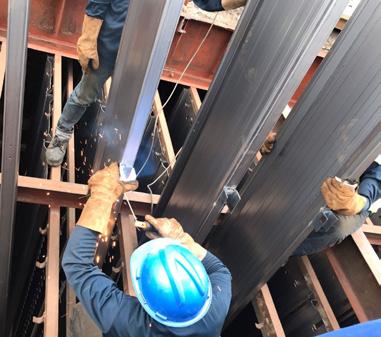
Photo 5. CE condition before replacement
Photo 3. Installing new CE
Problems observed from the ESP inspection were addressed and solved as part of the scope of work of this project. CE and RDE were replaced for the entire 3 fields, where CE material for the 1 st and 2 nd fields had been changed to Corten steel to withstand corrosion. Maintenance and replacement of some internal parts like rapping system and manhole gasket were also carried out. With good project management and proper supervision of installation, replacement of CE and DE was successfully completed within the plant’s period of shutdown. Photo 6. CE condition after 5 months of replacement

Expertise on ESP together with good quality products are elements to solutions of ESP problems. Improving an ESP to be efficient is not necessarily expensive as long as solutions are based on the root causes found. Good emission control not only portrays environmental awareness but also expresses social responsibility and well-being.


